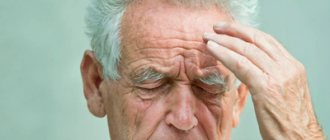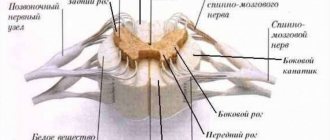Self-regulation is an important part of the human psyche, and it is useful for every person to master it. It's about managing your mental and emotional state, and this is undoubtedly a very useful quality. By influencing oneself with mental images, controlling breathing, or using other techniques, a person can “come to his senses” quite quickly. So how do you master self-regulation?
What is self-regulation
Let us take a closer look at the concept of “self-regulation” in psychology and pedagogy.
In psychology
Self-regulation means assessing the situation and adjusting one’s own activity directly by the individual. As a result, the results of the action are adjusted. There is voluntary and involuntary self-regulation.
Voluntary form is characterized by conscious control of behavior in order to achieve the desired. With the help of conscious self-regulation, a person develops individuality. Involuntary is more aimed at survival and self-preservation - subconscious defense mechanisms are triggered.
The norm is considered to be a situation where self-regulation is formed and develops in parallel with personal maturation. If there is no personal development, a person does not learn to bear responsibility, then the situation worsens. The development of self-regulation is impossible without personal growth.
In adulthood, self-regulation helps subordinate emotions to intellect, but in old age the balance shifts again towards emotions.
Aspects influencing self-regulation
:
- external environmental conditions;
- personality traits;
- features of the relationship between the individual and the environment;
- goals of activity.
Simply put, self-regulation is socially acceptable methods of dealing with feelings and emotions, as well as accepting norms of behavior, respect for others, and adequate reactions.
In pedagogy
Teachers often have to be in stressful situations related to children, their parents, presentation of new material, and so on. It is especially important for a teacher to master relaxation and mental self-regulation methods. One of them can be called autogenic training - work with self-hypnosis and self-tuning of the psyche, based on the use of the relaxation process. It becomes easier to manage emotions and restore performance.
How to master auto-training
?
- learn self-hypnosis
: focus attention on a separate object (your entire body or its individual components); - visualize
the contents of self-hypnosis formulas as clearly as possible (“my hands are relaxed, I am calm”, etc.); - periodically achieve complete relaxation of your arms, legs, and torso
. Relaxation of skeletal muscles and a low level of wakefulness in the brain have a direct connection with calming the nervous system and reducing emotional tension.
Teachers are advised to pay special attention to self-regulation and influence themselves with effective language. There are many auto-training methods that help you develop the necessary skills. Some educational institutions include psychological relief rooms, where the teacher has the opportunity to relieve tension caused by a certain irritant. Popular methods of pedagogical self-regulation: bibliotherapy, music therapy, occupational therapy, cultivating optimism, and so on.
Afterword
Self-regulation really works. The body and brain are one, as psychosomatics has long shown. Therefore, you should not be skeptical about exercises that seem to have little to do with psychology.
But you need to approach the development of self-regulation carefully and following a number of rules:
- clearly see the goal and stick to it;
- the process of developing a skill must be consistent and purposeful;
- be prepared for high energy costs, especially at the beginning of the journey;
- despite consistency and purposefulness, adhere to diversity in the development of self-regulation methods.
It is impossible to create one set of self-regulation methods for a lifetime, since the very ability to self-government is associated with such changeable elements as needs, personality and character traits, motives, and more. You can read more about the intricacies of developing self-regulation and what it is in the article “Self-regulation - what is it in psychology. Concept, types and functions."
The techniques presented in the article were borrowed from the book by T. G. Volkova “Workshop on the psychology of self-awareness and self-regulation: methodological materials for the course.” You can find this literature and learn more about other techniques and methods of self-regulation.
Theories of mental self-regulation
Let's consider popular theories of self-regulation in psychology.
System activity theory
The author of the theory is L. G. Dikaya. The concept assumes that psychological self-regulation is considered as a system and as an activity related to the individual’s professional environment and adaptation.
As a system, self-regulation can be considered in the context of the individual’s transition from unconsciousness to conscious and automatic forms.
The author has identified several levels
:
- Involuntary level
. The basis of regulation is the processes of excitation and inhibition, as well as nonspecific activity in the psyche. These reactions are uncontrollable and their duration is short. - Arbitrary level
. The need for regulation occurs in difficult life situations, emotions are involved. The reaction becomes in semi-conscious ways: increased speech and motor activity, holding your breath, muscle tension. Usually a person tries to automatically awaken himself and does not take many changes into account. - Conscious regulation
. A person becomes aware of fatigue, discomfort, tension. He can also analyze the level of severity of his condition. He decides to change the situation, and here such aspects as self-control, will, psychophysical exercises, and auto-training come into play. - Purposeful conscious level
. Clearly realizing that this can no longer continue, and the time has come to choose between psychological self-regulation, the individual, wanting to eliminate the discomfort, begins to re-prioritize and evaluate his own needs and motives. As a result, a decision is made to temporarily abandon activities and take care of one’s condition. If this opportunity is not provided, then a decision is made to continue activity in discomfort or to balance activity and self-regulation. Next comes a series of such aspects: self-persuasion, introspection, self-hypnosis, self-programming. Changes occur not only at the cognitive level, but also at the personal level.
System-functional theory
The author of the theory was A. O. Prokhorov, who considered psychological self-regulation as a transition from one mental state to another, associated with ideas about the desired mood. A conscious image helps to activate self-control and corresponding motives.
Having resorted to conscious methods to achieve what he wants, a person usually uses different methods and goes through more than one intermediate state. Subsequently, a functional structure of personality self-regulation is formed - a conscious reaction to conflict situations.
A. O. Prokhorov noted that self-regulation is a transition from one state to another, which is achieved through the connection of mental properties and internal switching of work.
The more conscious the consciousness, the more successful the regulation. Also important is the clarity of formation of the desired image and the realism of perceptions and sensations. The current position is analyzed using bodily sensations, breathing, perception of time and space.
Kinds
Modern practical psychology successfully uses different types of mental self-regulation to normalize the internal state of the individual.
Popular types include
:
- autogenic training, based on the use of special self-hypnosis formulas that allow you to influence body processes;
- self-education through certain exercises;
- biofeedback;
- meditation;
- visualization.
The conscious use of certain types of self-regulation begins at approximately three years of age.
- At 3-4 years of age,
involuntary motor and speech methods of self-regulation are predominant - for every 7-8 involuntary ones there is so far only one voluntary one. - Children 4-5 years old
learn emotional control through play. Involuntary methods still predominate: four to one. - By the age of 5-6 years
, the proportions are equalized one to one, and now children actively use imagination, memory, thinking and speech. - From the age of 6-7 years
you can already talk about self-correction and self-control. The proportions have changed dramatically: for every 3-4 voluntary methods of self-regulation, there is only one involuntary one. - From the age of 8
and throughout the entire period of growing up, an individual improves his methods, adopting them from those around him. - At the age of 20-40 years
, the type of self-regulation chosen has a direct dependence on human activity. Conscious volitional methods are mainly used. - A person of 40-60 years old
retains manipulations with attention, but they are gradually replaced by passive rest and bibliotherapy. - After 60 years
, passive relaxation, communication, reflection and comprehension are predominant.
Development of assertiveness (internal balance)
A person becomes nervous when he feels an existential threat. Physiological reactions during severe anxiety are designed to activate the body's hidden reserves to combat troubles. The heart begins to beat faster so that the muscles become toned and the blood circulates better, supplying the brain with oxygen.
When a person is very worried and does not know how to calm himself down, he either behaves passively, confused and scared, or aggressively and unrestrained.
These strategies are ineffective. The most beneficial strategy for survival in society is the ability to maintain internal balance, in which a person has his own opinion, an independent view of the situation, and a calm perception of reality.
A person’s ability to independently regulate his own behavior and be responsible for it is called assertiveness.
- A person in an assertive state looks at life calmly, analyzes and makes informed decisions, does not give in to manipulation, and uses self-regulation techniques. A person’s internal position is stable, he is self-confident, balanced, and he perceives a difficult situation as under his control.
- Assertiveness presupposes the ability to quickly move away from a problem, ease of perception and a low degree of indifference. You need to become an outside observer of the ongoing event, interested, but not involved.
- Such behavior may be perceived by others as callous and indifferent, but it allows a person to maintain inner peace and harmony. Advice to look at life more simply and not take everything to heart implies the development of assertiveness.
- Self-regulation methods are aimed at developing assertiveness as the ability to quickly stop worries, look at oneself from the outside, give an objective assessment of what is happening and make a reasonable decision.
Functions
It is important to understand the basic functions of self-regulation in psychology in order to understand its value. It changes mental activity, which allows the individual to achieve balance and harmony.
In turn, this provides us with such significant advantages
:
- Containing the first negative impulses in a conflict situation
. A person who masters self-regulation methods is able to nip conflict in the bud. - Rational analysis of the situation at a time of crisis or stress
. A very important quality that improves the life of any person and those around him. - Accumulation of strength
. However, it is important not only to accumulate strength, but also to restore it, and self-regulation does an excellent job of this. - Confronting adversity
. The subsequent quality of our life and harmony in relationships with others depends on how we confront problems.
Steps towards peace of mind
A person is most nervous in a situation of uncertainty. Any exciting situation needs to be sorted out. How to quickly calm down if you don’t understand what’s going on? Knowledge gives a person confidence in what is happening.
- Clarifying the situation is the first step to peace of mind in a particular situation.
- The second step is to use self-regulation techniques to calm yourself enough to think quickly and clearly in a difficult situation.
- The third step is to analyze what is happening and decide on a course of action.
If there is a threat, real or potentially dangerous, you need to be able to easily and quickly put your thoughts and emotions in order in order to take measures to eliminate the danger or avoid it.
For example, if a person gets lost in the forest, one must not give in to panic and excitement, but while maintaining a sober mind, be able to quickly find the way home.
If anxieties, worries and fears are excessive and unreasonable, self-regulation methods are needed to balance mental processes.
Most people worry about little things. For overly anxious individuals, worry and negative experiences are a common activity and way of life.
For example, people are worried and cannot calm themselves down during a job interview. The reason for this excitement is the exaggerated value of the event. An interview is not a life-threatening situation, the person simply doubts himself and is afraid of making a negative impression. Excitement plays a cruel joke on him, does not allow him to think soberly, slows down his reactions, makes his speech intermittent and incoherent. As a result, the excitement and anxiety are justified.
A person needs to use self-regulation methods in such and other similar situations when the significance of the event is exaggerated.
Popular methods of self-regulation
Let's look at common methods of self-regulation.
Relaxation
Everyone determines for themselves which method of relaxation is most suitable for them within the framework of self-regulation. The main goal of this method is to achieve internal harmony, relieve muscle tension and tension, and master muscle control.
Meditation
Thanks to meditation, we learn to concentrate, relax our attention and increase it. The main goal of meditation is to relieve emotional stress and distract from depressing thoughts. If you need to collect yourself and calm down, breathing techniques are often used. You can use the technique of distraction - think about anything except the annoying circumstance.
Desensitization
When desensitization is effective: intentional passivity, presentation of successful behavior, neutral attitude towards harmful factors using self-suggestion.
Autogenic training
Any auto-training is based on the relaxation mechanism. You master muscle relaxation techniques, develop the skills of sensing cold and heat in the body, increase your volitional attitude and focus on monitoring the state of the body. The main goal of auto-training is to relieve emotional and muscle tension, achieve a completely relaxed state for the development of volition.
Mechanism of natural self-regulation
One of the most accessible methods of self-regulation are natural regulation techniques.
There are quite a lot of them, we will list the simplest and most common ones.
:
- classical music;
- walk in nature;
- good sleep;
- humor, laughter, smiles;
- breathing fresh air;
- thinking about positive things;
- relaxed muscles;
- contemplation of a beautiful landscape;
- contemplating photos with a loved one, pleasant memorabilia;
- sunbathing;
- communication with a pleasant person.











